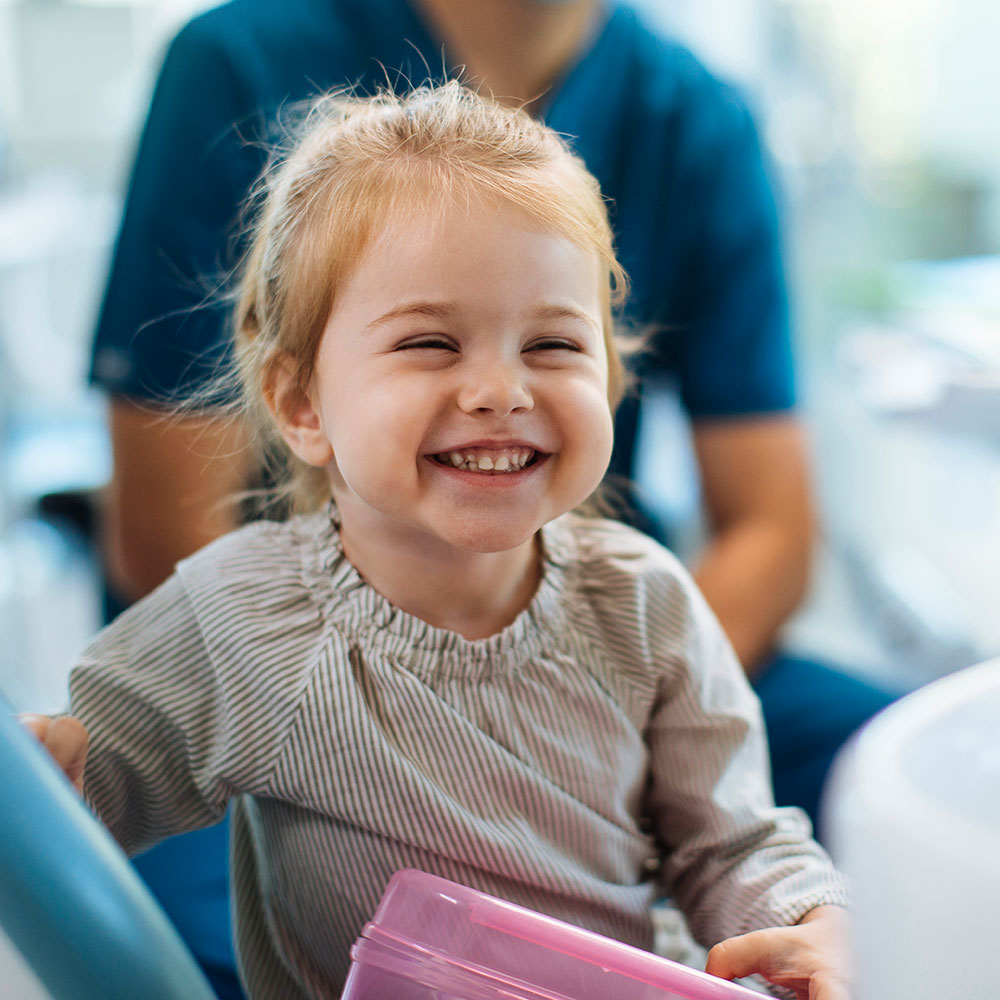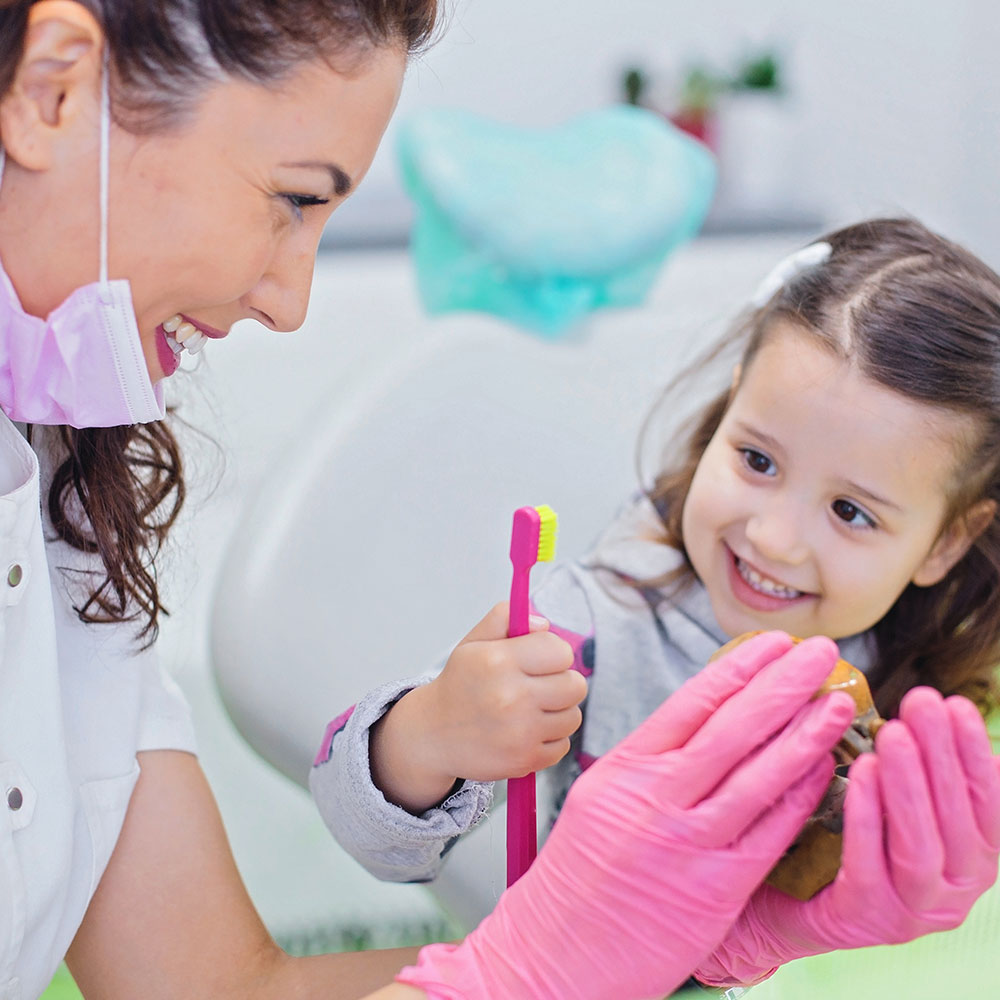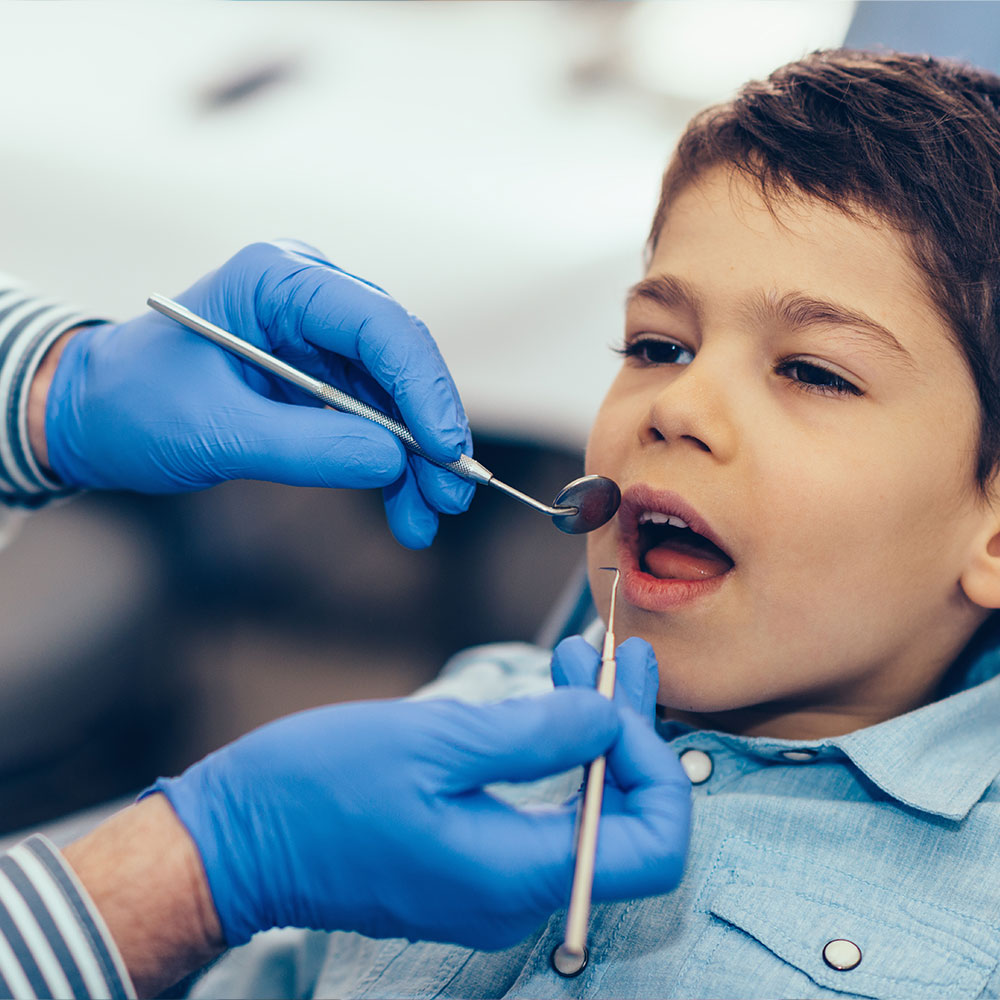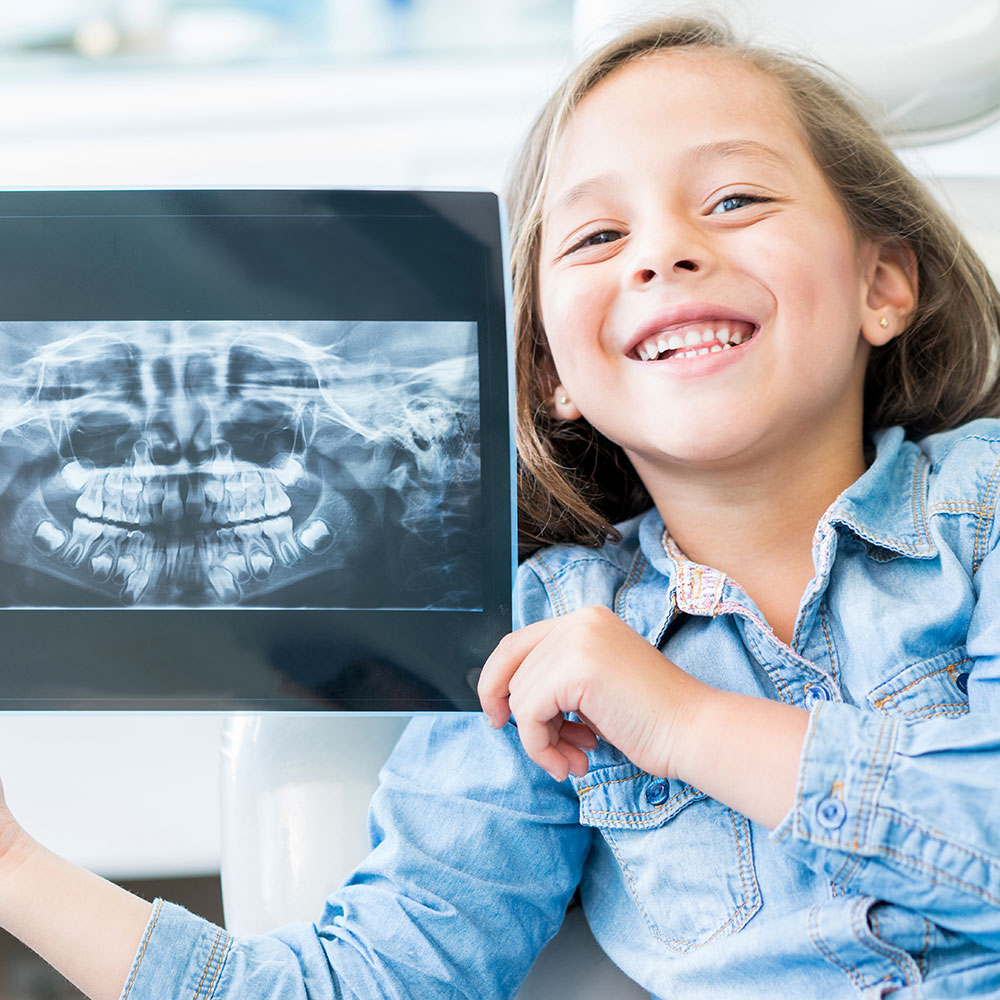
White Fillings
Because the safety of our patients is our #1 concern, we use BPA-free composite fillings. These white fillings are safe for children and aesthetically appealing.
Pediatric Crowns
Stainless steel crowns are sometimes recommended for children following a very deep filling or nerve treatment or if a back baby tooth suffers from severe trauma or cavities. Because most baby molars do not fall out until the ages of 10-12, these crowns are recommended when traditional fillings are insufficient to protect the tooth from further damage until it falls out on its own.


Pulpotomy
A cavity involving the nerve, or pulp, of a tooth may cause excruciating pain for your child. Although the pain may be manageable using painkillers such as ibuprofen, it will keep recurring until the underlying problem is resolved. When the nerve of a child’s tooth has been infected, it must be treated to restore health to the child’s mouth.
Pulpotomy is designed to maintain the integrity of the affected tooth to prevent premature loss. The early loss of posterior (back) teeth can lead to future problems with the placement and eruption of adult teeth. To avoid the difficulties inherent with crooked or impacted adult teeth, proper treatment is needed to avoid the premature loss of primary molars. Dental caries and traumatic injury are the primary reasons for pulp therapy in children. Due to the loss of tooth structure involved in teeth requiring nerve treatment, full coverage restoration such as a pediatric crown is necessary.
Bonding
A damaged front tooth sometimes requires a cosmetic filling. Fractured permanent teeth are common injuries in adolescent children and may require a simple bonding procedure similar to a filling. With a bonding procedure, however, there is no decayed matter removed during the process.


Extractions
Extractions are commonly performed on pediatric patients to address extensively decayed non-restorable teeth or orthodontic problems. To help make the procedure as comfortable as possible for your child, we may recommend the inhalation of nitrous oxide (laughing gas) and a local anesthetic.

